Nissan Micra 2016 Owner's Manual
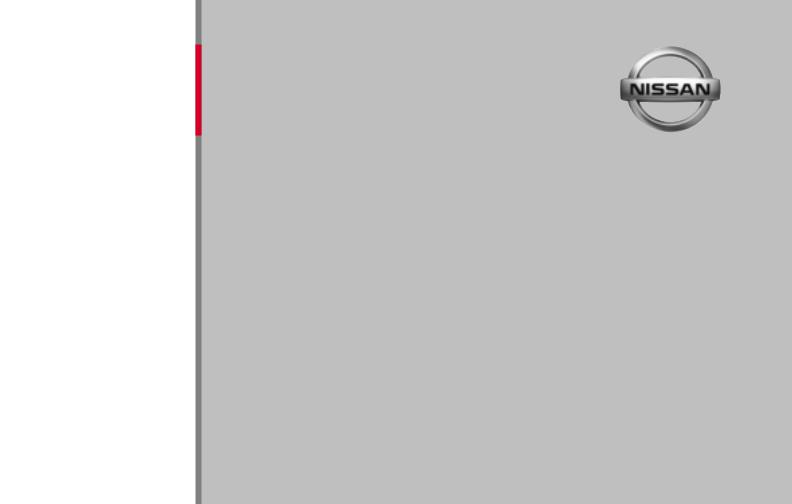
→
2016 MICRA
OWNER’S MANUAL
For your safety, read carefully and keep in this vehicle.

FOREWORD |
READ FIRST—THEN DRIVE SAFELY |
Welcome to the growing family of new NISSAN owners. This vehicle is delivered to you with confidence. It was produced using the latest techniques and strict quality control.
This manual was prepared to help you understand the operation and maintenance of your vehicle so that you may enjoy many kilometers (miles) of driving pleasure. Please read through this manual before operating your vehicle.
A separate Warranty Information Booklet explains details about the warranties covering your vehicle. The “NISSAN Service and Maintenance Guide” explains details about maintaining and servicing your vehicle.
A NISSAN dealership knows your vehicle best. When you require any service or have any questions, they will be glad to assist you with the extensive resources available to them.
In addition to factory-installed options, your vehicle may also be equipped with additional accessories installed by NISSAN or by a NISSAN dealer prior to delivery. It is important that you familiarize yourself with all disclosures, warnings, cautions and instructions concerning proper use of such accessories prior to operating the vehicle and/or accessory. See a NISSAN dealer for details concerning the particular accessories with which your vehicle is equipped.
Before driving your vehicle, please read this Owner’s Manual carefully. This will ensure familiarity with controls and maintenance requirements assisting you in the safe operation of your vehicle.
WARNING
IMPORTANT SAFETY INFORMATION REMINDERS!
Follow these important driving rules to help ensure a safe and comfortable trip for you and your passengers!
●NEVER drive under the influence of alcohol or drugs.
●ALWAYS observe posted speed limits and never drive too fast for conditions.
●ALWAYS give your full attention to driving and avoid using vehicle features or taking other actions that could distract you.
●ALWAYS use your seat belts and appropriate child restraint systems. Preteen children should be seated in the rear seat.
●ALWAYS provide information about the proper use of vehicle safety features to all occupants of the vehicle.
●ALWAYS review this Owner’s Manual for important safety information.
MODIFICATION OF YOUR VEHICLE
This vehicle should not be modified. Modification could affect its performance, safety or durability and may even violate governmental regulations. In addition, damage or performance problems resulting from modifications may not be covered under NISSAN warranties.
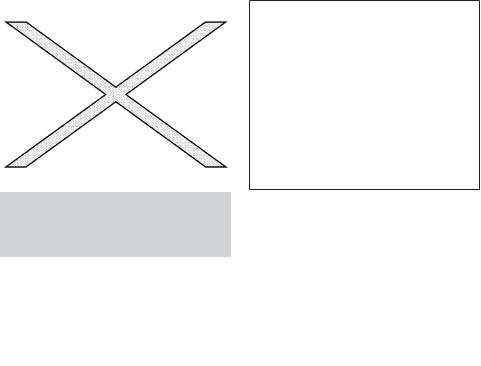
WHEN READING THE MANUAL
This manual includes information for all features and equipment available on this model. Features and equipment in your vehicle may vary depending on model, trim level, options selected, order, date of production, region or availability. Therefore, you may find information about features or equipment that are not included or installed on your vehicle.
All information, specifications and illustrations in this manual are those in effect at the time of printing. NISSAN reserves the right to change specifications, performance, design or component suppliers without notice and without obligation. From time to time, NISSAN may update or revise this manual to provide Owners with the most accurate information currently available. Please carefully read and retain with this manual all revision updates sent to you by NISSAN to ensure you have access to accurate and up-to- date information regarding your vehicle. Current versions of vehicle Owner’s Manuals and any updates can also be found in the Owner section of the NISSAN website at https://owners.nissanusa.com/nowners/ navigation/manualsGuide. If you have questions concerning any information in your Owner’s Manual, contact NISSAN Consumer Affairs. See the NISSAN CUSTOMER CARE PROGRAM page in this Owner’s Manual for contact information.
IMPORTANT INFORMATION ABOUT THIS MANUAL
You will see various symbols in this manual. They are used in the following ways:
WARNING
This is used to indicate the presence of a hazard that could cause death or serious personal injury. To avoid or reduce the risk, the procedures must be followed precisely.
CAUTION
This is used to indicate the presence of a hazard that could cause minor or moderate personal injury or damage to your vehicle. To avoid or reduce the risk, the procedures must be followed carefully.
APD1005
If you see this symbol, it means “Do not do this” or “Do not let this happen.”
If you see a symbol similar to these in an illustration, it means the arrow points to the front of the vehicle.
Arrows in an illustration that are similar to these indicate movement or action.
Arrows in an illustration that are similar to these call attention to an item in the illustration.

BLUETOOTH® is a trademark owned by Bluetooth SIG, Inc. and licensed to Visteon.
© Nissan Mexicana, S. A. de C. V.
All rights reserved. No part of this Owner’s Manual may be reproduced or stored in a retrieval system, or transmitted in any form, or by any means, electronic, mechanical, photocopying, recording or otherwise, without the prior written permission of Nissan Mexicana, S. A. de C. V.
NISSAN CUSTOMER CARE
PROGRAM
NISSAN CARES . . .
Both NISSAN and your NISSAN dealer are dedicated to serving all your automotive needs. Your satisfaction with your vehicle and your NISSAN dealer are our primary concerns. Your NISSAN dealer is always available to assist you with all your automobile sales and service needs.
However, if there is something that your NISSAN dealer cannot assist you with or you would like to provide NISSAN directly with comments or questions, please contact the NISSAN Consumer Affairs Department using our toll-free number:
1-800-387-0122
The Consumer Affairs Department will ask for the following information:
–Your name, address and telephone number
–Vehicle identification number (attached to the top of the instrument panel on the driver’s side)
–Date of purchase
–Current odometer reading
–Your NISSAN dealer’s name
–Your comments or questions
OR
You can write to NISSAN with the information at:
Nissan Canada Inc.
5290 Orbitor Drive Mississauga, Ontario L4W 4Z5 or via e-mail at:
information.centre@nissancanada.com
If you prefer, visit us at: www.nissan.ca
We appreciate your interest in NISSAN and thank you for buying a quality NISSAN vehicle.

Table of
Contents
Illustrated table of contents |
|
0 |
|
|
|
|
|
|
Safety—Seats, seat belts and supplemental restraint system |
|
1 |
|
|
|
|
2 |
|
Instruments and controls |
|
|
|
|
|
|
|
|
Pre-driving checks and adjustments |
|
3 |
|
|
|
|
|
|
Display screen, heater, air conditioner, audio and phone systems |
|
4 |
|
|
|
|
|
|
Starting and driving |
|
5 |
|
|
|
|
|
|
In case of emergency |
|
6 |
|
|
|
|
|
|
Appearance and care |
|
7 |
|
|
|
|
|
|
Maintenance and do-it-yourself |
|
8 |
|
|
|
|
|
|
Technical and consumer information |
|
9 |
|
|
|
Index |
|
10 |

0 Illustrated table of contents
Air bags, seat belts and child restraints . . . . . . . . . . . . . . 0-2 Exterior front . . . . . . . . . . . . . . . . . . . . . . . . . . . . . . . . . . . . . . 0-3 Exterior rear. . . . . . . . . . . . . . . . . . . . . . . . . . . . . . . . . . . . . . . 0-4 Passenger compartment . . . . . . . . . . . . . . . . . . . . . . . . . . . 0-5
Instrument panel. . . . . . . . . . . . . . . . . . . . . . . . . . . . . . . . . . . 0-6 Engine compartment check locations . . . . . . . . . . . . . . . . 0-8 Warning and indicator lights . . . . . . . . . . . . . . . . . . . . . . . . 0-9

AIR BAGS, SEAT BELTS AND CHILD
RESTRAINTS
1. Supplemental front-impact air bag modules (P. 1-39)
2. Roof-mounted curtain side-impact supplemental air bag (P. 1-39)
3. Front seat-mounted side-impact supplemental air bag (P. 1-39)
4. Front seat belt with pretensioner(s) and shoulder height adjuster (P. 1-10, 1-39)
5. Head restraints/headrests (P. 1-6)
6. Rear seat belts (P. 1-10)
7. LATCH (Lower Anchors and Tethers for CHildren) system (P. 1-19)
8. Seats (P. 1-2)
9. Occupant classification sensor (weight sensor) (P. 1-39)
Refer to the page number indicated in parentheses for operating details.
LII2334
0-2 Illustrated table of contents

EXTERIOR FRONT
1. Engine hood (P. 3-8)
2. Windshield (P. 8-17)
3. Wiper and washer switch (P. 2-15)
4. Antenna (P. 4-47)
5. Power windows (if so equipped) (P. 2-26)
6. Door locks (P. 3-3)
Key fob (if so equipped) (P. 3-5) Keys (P. 3-2)
7 Mirrors (P. 3-14)
8. Tire pressure (P. 8-33) Flat tire (P. 6-2)
Tire chains (P. 8-33)
9. Headlight and turn signal switch (P. 2-18)
Replacing bulbs (P. 8-24)
10. Fog light switch (if so equipped) (P. 2-18)
Refer to the page number indicated in parentheses for operating details.
LII2335
Illustrated table of contents 0-3

EXTERIOR REAR
1. Replacing bulbs (P. 8-24)
2. Rear wiper and washer switch (P. 2-15) 3. Rear window defroster switch (P. 2-17) 4. Rear hatch opener (P. 3-9)
5 Rearview monitor (if so equipped) (P. 4-2)
6. Fuel-filler door (P. 3-10) Fuel-filler cap (P. 3-10)
Fuel recommendation (P. 9-2)
7. Child safety rear door lock (P. 3-3)
Refer to the page number indicated in parentheses for operating details.
LII2336
0-4 Illustrated table of contents

PASSENGER COMPARTMENT
1. Sun visors (P. 3-12)
2. Interior lights (P. 2-28)
3. Rearview mirror (P. 3-14)
4. Glove box (P. 2-22)
5. Storage trays (P. 2-22) Cup holders (P. 2-22)
Refer to the page number indicated in parentheses for operating details.
LII2375
Illustrated table of contents 0-5

INSTRUMENT PANEL
1. Headlight/turn signal switch (P. 2-18)
2. Driver’s supplemental air bag (P. 1-46) Horn (P. 2-21)
3. Meters and gauges (P. 2-3)
4. Wiper and washer switch (P. 2-15)
5. Center vents (P. 4-8)
6. Rear window and outside mirror (if so equipped) defroster switch (P. 2-17)
7. Hazard warning flasher switch (P. 6-2)
8. Front passenger air bag status light (P. 1-39)
9. Climate controls (P. 4-9) 10. Audio system (P. 4-33, 4-25)
11. Passenger’s supplemental air bag (P. 1-46)
12. Side vents (P. 4-8)
Hood release lever (P. 3-8) 13. Glove box (P. 2-22)
14. Shift lever (P. 5-8)
15. Cup holders (P. 2-23)
16. 12v power outlet (P. 2-21)
17. USB port (if so equipped) (P. 4-42) 18. Cruise control (if so equipped) (P.5-15) 19. Ignition switch (P. 5-5)
20. Tilt steering (P. 3-12)
LII2367
0-6 Illustrated table of contents
21.Audio control switches (if so equipped) (P.4-46)
Bluetooth® hands-free phone system controls (if so equipped) (P. 4-48)
22.Fuel-filler door release lever (P. 3-10)
23.Vehicle Dynamic Control (VDC) OFF switch (P. 2-21)
24.Electronic outside rearview mirror control switch (if so equipped) (P. 3-15)
Refer to the page number indicated in parentheses for operating details.
Illustrated table of contents 0-7

ENGINE COMPARTMENT CHECK
LOCATIONS
HR16DE Engine
1. Drive belt location (P. 8-15)
2. Engine oil filler cap (P. 8-9)
3. Air cleaner (P. 8-17)
4. Brake and clutch (if so equipped) fluid reservoir (P. 8-12)
5. Fusible link (P. 8-20)
6. Battery (P. 8-13)
7. Engine coolant reservoir (P. 8-7)
8. Radiator cap (P. 8-7)
9. Engine oil dipstick (P. 8-9)
10. Windshield-washer fluid reservoir (P. 8-13)
Refer to the page number indicated in parentheses for operating details.
LDI2377
0-8 Illustrated table of contents
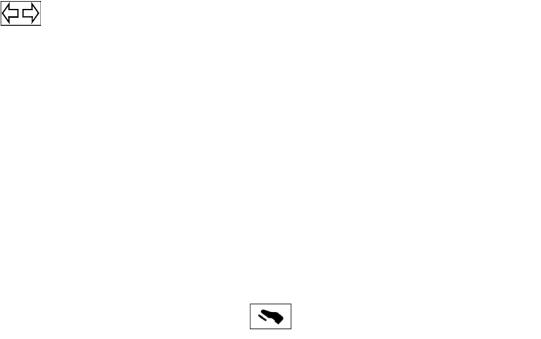
WARNING AND INDICATOR LIGHTS
Warning |
Name |
Page |
light |
|
|
|
|
|
|
Anti-lock Braking |
2-8 |
|
System (ABS) warn- |
|
|
ing light |
|
|
|
|
|
Brake warning light |
2-8 |
|
|
|
|
Charge warning light |
2-8 |
|
|
|
|
Door open warning |
2-8 |
|
light |
|
|
|
|
|
Engine oil pressure |
2-8 |
|
warning light |
|
|
|
|
|
High temperature |
2-9 |
|
warning light (red) |
|
|
|
|
|
Low fuel warning |
2-9 |
|
light |
|
|
|
|
|
Low windshield- |
2-9 |
|
washer fluid warning |
|
|
light |
|
|
|
|
Warning |
Name |
Page |
light |
|
|
|
|
|
|
Power steering |
2-9 |
|
warning light (if so |
|
|
equipped) |
|
|
|
|
|
Seat belt warning |
2-10 |
|
light and chime (if so |
|
|
equipped) |
|
|
|
|
|
Supplemental air |
2-10 |
|
bag warning light |
|
|
|
|
|
|
|
Indicator |
Name |
Page |
light |
|
|
|
|
|
|
Automatic Transmis- |
2-10 |
|
sion position indica- |
|
|
tor light (A/T models |
|
|
only) |
|
|
|
|
|
Cruise main switch |
2-10 |
|
indicator light (if so |
|
|
equipped) |
|
|
|
|
|
Engine start opera- |
2-11 |
|
tion indicator light (if |
|
|
so equipped) |
|
|
|
|
Indicator |
Name |
Page |
light |
|
|
|
|
|
|
Front fog light indi- |
2-11 |
|
cator light (if so |
|
|
equipped) |
|
|
|
|
|
Front passenger air |
2-11 |
|
bag status light |
|
|
|
|
|
High beam indicator |
2-11 |
|
light (blue) |
|
|
|
|
|
Malfunction Indica- |
2-11 |
|
tor Light (MIL) |
|
|
|
|
|
Overdrive OFF indi- |
2-12 |
|
cator light (A/T |
|
|
models only) |
|
|
|
|
|
Security indicator |
2-12 |
|
light |
|
|
|
|
|
Slip indicator light |
2-12 |
|
|
|
|
Turn signal/hazard |
2-12 |
|
indicator lights |
|
|
|
|
Illustrated table of contents 0-9

Indicator |
Name |
Page |
light |
|
|
|
|
|
|
Vehicle Dynamic |
2-12 |
|
Control (VDC) OFF |
|
|
indicator light |
|
|
|
|
0-10 Illustrated table of contents

1 Safety—Seats, seat belts and supplemental restraint system
Seats . . . . . . . . . . . . . . . . . . . . . . . . . . . . . . . . . . . . . . . . . . . . 1-2 Front manual seat adjustment . . . . . . . . . . . . . . . . . . . . 1-3 Armrest (if so equipped for driver’s seat) . . . . . . . . . . 1-4 Folding rear seat . . . . . . . . . . . . . . . . . . . . . . . . . . . . . . . 1-4 Head restraints/headrests . . . . . . . . . . . . . . . . . . . . . . . . . . 1-6
Adjustable head restraint/headrest
components . . . . . . . . . . . . . . . . . . . . . . . . . . . . . . . . . . . 1-7 Non-adjustable head restraint/headrest
components . . . . . . . . . . . . . . . . . . . . . . . . . . . . . . . . . . . 1-7 Remove . . . . . . . . . . . . . . . . . . . . . . . . . . . . . . . . . . . . . . . 1-7 Install . . . . . . . . . . . . . . . . . . . . . . . . . . . . . . . . . . . . . . . . . 1-8 Adjust. . . . . . . . . . . . . . . . . . . . . . . . . . . . . . . . . . . . . . . . . 1-8 Seat belts . . . . . . . . . . . . . . . . . . . . . . . . . . . . . . . . . . . . . . .1-10 Precautions on seat belt usage. . . . . . . . . . . . . . . . . .1-10 Seat belt warning light . . . . . . . . . . . . . . . . . . . . . . . . .1-12 Pregnant women . . . . . . . . . . . . . . . . . . . . . . . . . . . . . .1-13 Injured persons. . . . . . . . . . . . . . . . . . . . . . . . . . . . . . . .1-13 Three-point type seat belt with retractor. . . . . . . . . .1-13 Seat belt extenders . . . . . . . . . . . . . . . . . . . . . . . . . . . .1-16 Seat belt maintenance . . . . . . . . . . . . . . . . . . . . . . . . .1-16
Child safety. . . . . . . . . . . . . . . . . . . . . . . . . . . . . . . . . . . . . .1-17 Infants. . . . . . . . . . . . . . . . . . . . . . . . . . . . . . . . . . . . . . . .1-17 Small children. . . . . . . . . . . . . . . . . . . . . . . . . . . . . . . . .1-18 Larger children . . . . . . . . . . . . . . . . . . . . . . . . . . . . . . . .1-18 Child restraints. . . . . . . . . . . . . . . . . . . . . . . . . . . . . . . . . . .1-19 Precautions on child restraints . . . . . . . . . . . . . . . . . .1-19
LATCH (Lower Anchors and Tethers for
CHildren) system. . . . . . . . . . . . . . . . . . . . . . . . . . . . . .1-21 Rear-facing child restraint installation using
LATCH . . . . . . . . . . . . . . . . . . . . . . . . . . . . . . . . . . . . . . .1-24 Rear-facing child restraint installation using
the seat belts . . . . . . . . . . . . . . . . . . . . . . . . . . . . . . . . .1-25 Forward-facing child restraint installation
using LATCH. . . . . . . . . . . . . . . . . . . . . . . . . . . . . . . . . .1-28 Forward-facing child restraint installation
using the seat belts . . . . . . . . . . . . . . . . . . . . . . . . . . . .1-31 Booster seats . . . . . . . . . . . . . . . . . . . . . . . . . . . . . . . . .1-36 Supplemental Restraint System (SRS) . . . . . . . . . . . . . .1-39 Precautions on SRS . . . . . . . . . . . . . . . . . . . . . . . . . . .1-39 Supplemental air bag warning labels. . . . . . . . . . . . .1-55 Supplemental air bag warning light . . . . . . . . . . . . . .1-56
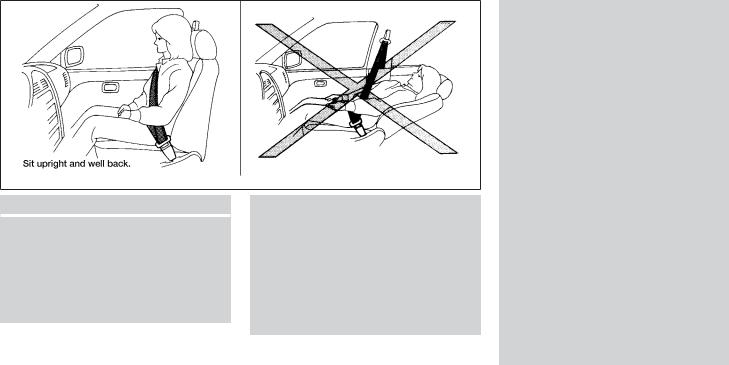
SEATS
ARS1152
WARNING
●Do not ride in a moving vehicle when the seatback is reclined. This can be dangerous. The shoulder belt will not be against your body. In an accident, you could be thrown into it and receive neck or other serious injuries. You could also slide under the lap belt and receive serious internal injuries.
●For the most effective protection when the vehicle is in motion, the seat should be upright. Always sit well back and upright in the seat with both feet on the floor and adjust the seat properly. For additional information, refer to “Precautions on seat belt usage” in this section.
●After adjustment, gently rock in the seat to make sure it is securely locked.
●Do not leave children unattended inside the vehicle. They could unknowingly activate switches or controls. Unattended children could become involved in serious accidents.
●To help avoid risk of injury or death through unintended operation of the vehicle and/or its systems, do not leave children, people who require the assistance of others or pets unattended in your vehicle. Additionally, the temperature inside a closed vehicle on a warm day can quickly become high enough to cause a significant risk of injury or death to people and pets.
●Do not adjust the driver’s seat while driving so full attention may be given to vehicle operation. The seat may move suddenly and could cause loss of control of the vehicle.
●The seatback should not be reclined any more than needed for comfort. Seat belts are most effective when the passenger sits well back and straight up in the seat. If the seatback is reclined, the risk of sliding under the lap belt and being injured is increased.
1-2 Safety—Seats, seat belts and supplemental restraint system

CAUTION
When adjusting the seat positions, be sure not to contact any moving parts to avoid possible injuries and/or damage.
FRONT MANUAL SEAT ADJUSTMENT
Your vehicle seats can be adjusted manually. For additional information about adjusting the seats, refer to the steps outlined in this section.
LRS2459 |
|
LRS2460 |
Forward and backward |
Reclining |
|
Pull the center of the bar up and hold it while you slide the seat forward or backward to the desired position. Release the bar to lock the seat in position.
To recline the seatback, pull the lever up and lean back. To bring the seatback forward, pull the lever up and lean your body forward. Release the lever to lock the seatback in position.
The reclining feature allows adjustment of the seatback for occupants of different sizes for added comfort and to help obtain proper seat belt fit. For additional information, refer to “Precautions on seat belt usage” in this section. Also, the seatback can be reclined to allow occupants to rest when the vehicle is stopped and the shift lever is in P (Park) or N (Neutral) position with the parking brake fully applied.
Safety—Seats, seat belts and supplemental restraint system 1-3

LRS2764
Seat lifter (if so equipped for driver’s seat)
Pull up or push down the adjusting lever to adjust the seat height until the desired position is achieved.
LRS2760
ARMREST (if so equipped for driver’s seat)
To use the armrest, pull it down to the resting position.
LRS2446
Folding rear seat 60/40
FOLDING REAR SEAT
Ensure the rear outboard seat belt webbing is properly stowed in the clip which is located at inside trim 1 before moving the rear seatback2 in order to prevent the outboard seat belt from getting caught behind the rear seatback.
1-4 Safety—Seats, seat belts and supplemental restraint system

LRS2440
Folding rear seat 60/40
1 Remove head restraint/headrest from the rear seatback.
2 Pull the strap A to fold each seatback down.
LRS2441
3 To return the rear seat to a seating position, lift up on the seatback and push it up to an upright position. Firmly press zones A andB to lock the seatback in place.
4 Install the head restraint/headrest.
WARNING
●Never allow anyone to ride in the cargo area or on the rear seat when it is in the fold-down position. Use of these areas by passengers without proper restraints could result in serious injury or death in an accident or sudden stop.
●Properly secure all cargo with ropes or straps to help prevent it from sliding or shifting. Do not place cargo higher than the seatbacks. In a sudden stop or collision, unsecured cargo could cause personal injury.
●When returning the seatbacks to the upright position, be certain they are completely secured in the latched position. If they are not completely secured, passengers may be injured in an accident or sudden stop.
●Closely supervise children when they are around cars to prevent them from playing and becoming locked in the hatch where they could be seriously injured. Keep the car locked, with the rear seatback and hatch securely latched when not in use, and prevent children’s access to car keys.
Safety—Seats, seat belts and supplemental restraint system 1-5
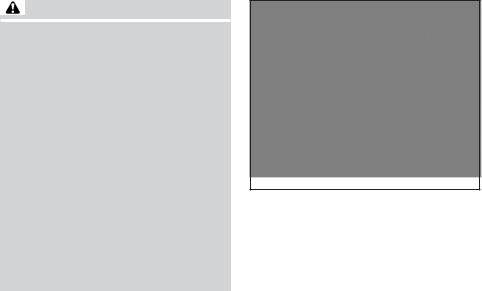
HEAD RESTRAINTS/HEADRESTS
WARNING
Head restraints/headrests supplement the other vehicle safety systems. They may provide additional protection against injury in certain rear end collisions. Adjustable head restraints/headrests must be adjusted properly, as specified in this section. Check the adjustment after someone else uses the seat. Do not attach anything to the head restraint/headrest stalks or remove the head restraint/headrest. Do not use the seat if the head restraint/headrest has been removed. If the head restraint/headrest was removed, reinstall and properly adjust the head restraint/headrest before an occupant uses the seating position. Failure to follow these instructions can reduce the effectiveness of the head restraints/headrests. This may increase the risk of serious injury or death in a collision.
LRS2000
The illustration shows the seating positions equipped with head restraints/headrests.
Indicates the seating position is equipped with a head restraint.
Indicates the seating position is equipped with a headrest.
+ Indicates the seating position is not equipped with a head restraint or headrest (if applicable).
●Your vehicle is equipped with a head restraint/headrest that may be integrated, adjustable or non-adjustable.
●Adjustable head restraints/headrests have multiple notches along the stalk(s) to lock them in a desired adjustment position.
●The non-adjustable head restraints/headrests have a single locking notch to secure them to the seat frame.
●Proper Adjustment:
–For the adjustable type, align the head restraint/headrest so the center of your ear is approximately level with the center of the head restraint/headrest.
–If your ear position is still higher than the recommended alignment, place the head restraint/headrest at the highest position.
●If the head restraint/headrest has been removed, ensure that it is reinstalled and locked in place before riding in that designated seating position.
1-6 Safety—Seats, seat belts and supplemental restraint system

LRS2300
ADJUSTABLE HEAD RESTRAINT/ HEADREST COMPONENTS
1.Removable head restraint/headrest
2.Multiple notches
3.Lock knob
4.Stalks
LRS2299
NON-ADJUSTABLE HEAD
RESTRAINT/HEADREST
COMPONENTS
1.Removable head restraint/headrest
2.Single notch
3.Lock knob
4.Stalks
LRS2302
REMOVE
Use the following procedure to remove the head restraint/headrest:
1.Pull the head restraint/headrest up to the highest position.
2.Push and hold the lock knob.
3.Remove the head restraint/headrest from the seat.
4.Store the head restraint/headrest properly in a secure place so it is not loose in the vehicle.
Safety—Seats, seat belts and supplemental restraint system 1-7

5.Reinstall and properly adjust the head restraint/headrest before an occupant uses the seating position.
LRS2303
INSTALL
1.Align the head restraint/headrest stalks with the holes in the seat. Make sure that the head restraint/headrest is facing the correct
direction. The stalk with the notch (notches)1 must be installed in the hole with the lock knob 2 .
2.Push and hold the lock knob and push the head restraint/headrest down.
3.Properly adjust the head restraint/headrest before an occupant uses the seating position.
WRS0134
ADJUST
For adjustable head restraint/headrest
Adjust the head restraint/headrest so the center is level with the center of your ears. If your ear position is still higher than the recommended alignment, place the head restraint/headrest at the highest position.
1-8 Safety—Seats, seat belts and supplemental restraint system

LRS2351
For non-adjustable head restraint/headrest
Make sure the head restraint/headrest is positioned so the lock knob is engaged in the notch before riding in that designated seating position.
LRS2305
Raise
To raise the head restraint/headrest, pull it up.
Make sure the head restraint/headrest is positioned so the lock knob is engaged in the notch before riding in that designated seating position.
LRS2306
Lower
To lower, push and hold the lock knob and push the head restraint/headrest down.
Make sure the head restraint/headrest is positioned so the lock knob is engaged in the notch before riding in that designated seating position.
Safety—Seats, seat belts and supplemental restraint system 1-9

SEAT BELTS
PRECAUTIONS ON SEAT BELT USAGE
If you are wearing your seat belt properly adjusted and you are sitting upright and well back in your seat with both feet on the floor, your chances of being injured or killed in a collision and/or the severity of injury may be greatly reduced. NISSAN strongly encourages you and all of your passengers to buckle up every time you drive, even if your seating position includes a supplemental air bag.
Most Canadian provinces or territories specify that seat belts be worn at all times when a vehicle is being driven.
SSS0136 |
|
SSS0016 |
WARNING
●Every person who drives or rides in this vehicle should use a seat belt at all times. Children should be in the rear seats and in an appropriate restraint.
1-10 Safety—Seats, seat belts and supplemental restraint system
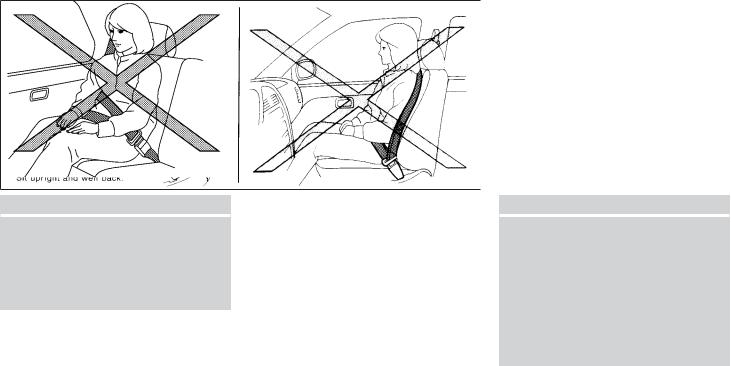
WARNING
●The seat belt should be properly adjusted to a snug fit. Failure to do so may reduce the effectiveness of the entire restraint system and increase the chance or severity of injury in an accident. Serious injury or death can occur if the seat belt is not worn properly.
SSS0134 |
|
SSS0014 |
WARNING
●Always route the shoulder belt over your shoulder and across your chest. Never put the belt behind your back, under your arm or across your neck. The belt should be away from your face and neck, but not falling off your shoulder.
●Position the lap belt as low and snug as possible AROUND THE HIPS, NOT THE WAIST. A lap belt worn too high could increase the risk of internal injuries in an accident.
Safety—Seats, seat belts and supplemental restraint system 1-11
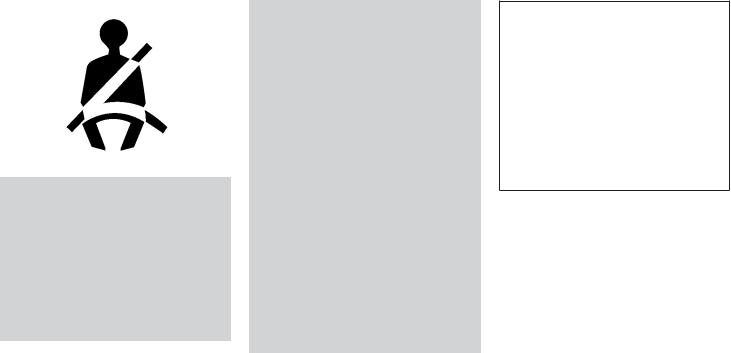
●Be sure the seat belt tongue is securely fastened to the proper buckle.
●Do not wear the seat belt inside out or twisted. Doing so may reduce its effectiveness.
●Do not allow more than one person to use the same seat belt.
●Never carry more people in the vehicle than there are seat belts.
●If the seat belt warning light glows continuously while the ignition is turned ON with all doors closed and all seat belts fastened, it may indicate a malfunction in the system. Have the system checked by a NISSAN dealer.
●No changes should be made to the seat belt system. For example, do not modify the seat belt, add material, or install devices that may change the seat belt routing or tension. Doing so may affect the operation of the seat belt system. Modifying or tampering with the seat belt system may result in serious personal injury.
●Once seat belt pretensioner(s) have activated, they cannot be reused and must be replaced together with the retractor. See a NISSAN dealer.
●Removal and installation of pretensioner system components should be done by a NISSAN dealer.
●All seat belt assemblies, including retractors and attaching hardware, should be inspected after any collision by a NISSAN dealer. NISSAN recommends that all seat belt assemblies in use during a collision be replaced unless the collision was minor and the belts show no damage and continue to operate properly. Seat belt assemblies not in use during a collision should also be inspected and replaced if either damage or improper operation is noted.
●All child restraints and attaching hardware should be inspected after any collision. Always follow the restraint manufacturer’s inspection instructions and replacement recommendations. The child restraints should be replaced if they are damaged.
1-12 Safety—Seats, seat belts and supplemental restraint system
LRS0786
SEAT BELT WARNING LIGHT
Both the driver’s and passenger’s front seats are equipped with a seat belt warning light. The warning light, located on the instrument panel, will show the status of the driver and passenger seat belt.
NOTE:
The driver’s and front passenger’s seat belt warning light will not light up if the front passenger seat is not occupied.
For additional information, refer to “Warning lights, indicator lights and audible reminders” in the “Instruments and controls” section of this manual.
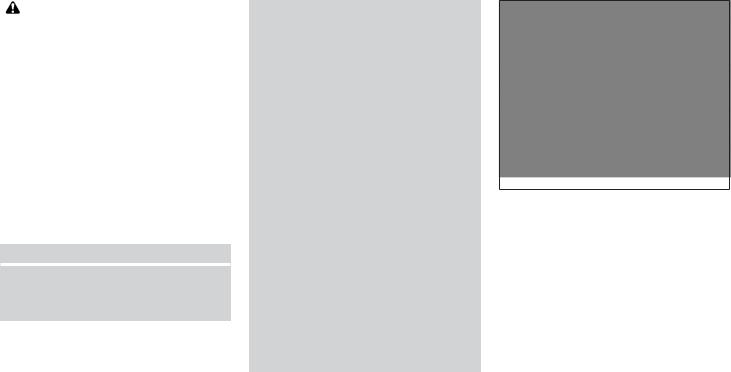
PREGNANT WOMEN
NISSAN recommends that pregnant women use seat belts. The seat belt should be worn snug and always position the lap belt as low as possible around the hips, not the waist. Place the shoulder belt over your shoulder and across your chest. Never run the lap/shoulder belt over your abdominal area. Contact your doctor for specific recommendations.
INJURED PERSONS
NISSAN recommends that injured persons use seat belts. Check with your doctor for specific recommendations.
THREE-POINT TYPE SEAT BELT WITH RETRACTOR
WARNING
●Every person who drives or rides in this vehicle should use a seat belt at all times. Children should be in the rear seats and in an appropriate restraint.
●Do not ride in a moving vehicle when the seatback is reclined. This can be dangerous. The shoulder belt will not be against your body. In an accident, you could be thrown into it and receive neck or other serious injuries. You could also slide under the lap belt and receive serious internal injuries.
●For the most effective protection when the vehicle is in motion, the seat should be upright. Always sit well back and upright in the seat with both feet on the floor and adjust the seat belt properly.
●Do not allow children to play with the seat belts. Most seating positions are equipped with Automatic Locking Retractor (ALR) mode seat belts. If the seat belt becomes wrapped around a child’s neck with the ALR mode activated, the child can be seriously injured or killed if the seat belt retracts and becomes tight. This can occur even if the vehicle is parked. Unbuckle the seat belt to release the child. If the seat belt cannot be unbuckled or is already unbuckled, release the child by cutting the seat belt with a suitable tool (such as a knife or scissors) to release the seat belt.
LRS2459
Manual front seat shown
Fastening the seat belts
1.Adjust the seat. For additional information, refer to “Seats” in this section.
Safety—Seats, seat belts and supplemental restraint system 1-13
